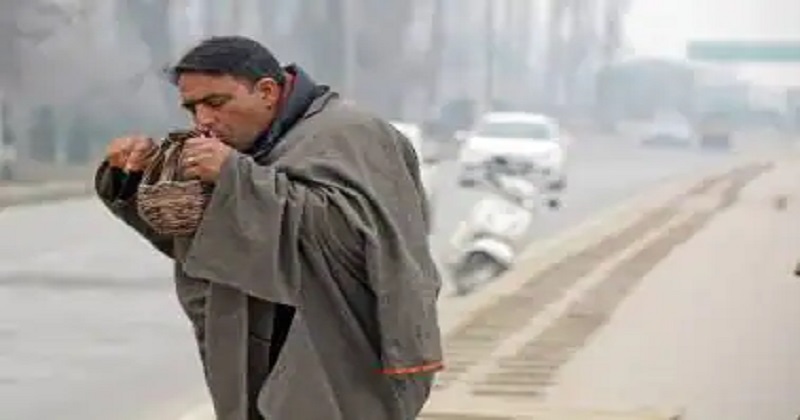
The Kashmir valley experiences a harsh winter called Chilla-i-Kalan between December and February. Winter temperatures can drop below zero. Water lines can freeze. Lakes, such as Dal Lake, turn into ice sheets. Then power cuts became routine. As autumn approaches, women begin preparing for the season by storing everything from food to fuel.
As part of a local practice called ‘hokh syun’, they sun-dry vegetables like tomatoes, turnips, bottle gourds, brinjals, and leafy vegetables. In the winter, Kashmirians consume smoked fish called farrigad, and dried fish called hokhegad. They still rely on traditional tools, such as the kangri, hamam, and bhukari, to stay warm. Before the sixties, winters isolated Kashmir from the rest of the world.

A warm room
Mansoor Ahmad Mir, 34, from Baramulla, took two years to build a concrete house. However, it lacked a hamam. Hamam is a Turkish innovation brought by the Mughals that consists of an entire room lined with lime mortar and a two-tiered floor. Its upper tier of limestone blocks is handmade. A firewood door connects the upper and lower tiers. Over the fire pit, there is a copper tank that collects the smoke and provides abundant warm water. Originally, these rooms were found only in mosques, but are now found in every home.
People with orthopaedic ailments were prescribed hamam stays by the hakims (a community in Kashmir). Usually there were two pools, one filled with hot water and herbs, and one lukewarm. Having hammams built into their homes became a symbol of wealth for wealthy families. Kashmiri villages have hamams in every household, regardless of their economic status. In response to the changing weather, he decided to correct the anomaly in his house as soon as possible.
Coal-powered radiators
The Bukhari radiator, which is essentially a tin box with an exhaust tube, can even be found in government offices. It is most commonly powered by coal. Despite gas bukharis entering the market in recent years, traders said the traditional coal-fueled ones are still selling like hotcakes (pun intended). Khambiyar Baramulla bukhari manufacturer Bashir Ahmad Lone makes over a hundred different types of these in a season.
Pocket-friendly warmers
A kangri is a personal heater, which is carried under an ancient clock called pheran. Kangris are earthen pots encased in wickers. The embers of coal are thrown into these pots. Developed from the primitive manan and kang, both of which were made of mud, the latter had a handle. Kangri comes in many varieties. Islamabad kangri, for example, has a broad base and a large mouth, which is the most common. It is generally purchased by people who do outdoor work, and it costs between Rs 150 and Rs 200.
Chrar kangri is the most expensive for its wicker quality, priced between Rs 300 and Rs 500 per piece. Bandipora kangri, priced about Rs 200 a piece, has a finer weave and is mostly supplied to north Kashmir. Silver chains embellish this dowry, traditionally given to brides as dowries.
Sheran, or the long coat, lived in the valley long before it came under the influence of Central Asia. Formerly known as loach, it was two pieces of cloth stitched together. Various fabrics were used throughout the year. As time passed, its name was mixed up with pairahan, the Persian word for garment. There are modernized versions of these today, which sell for more than Rs 3,500.

Post Your Comments